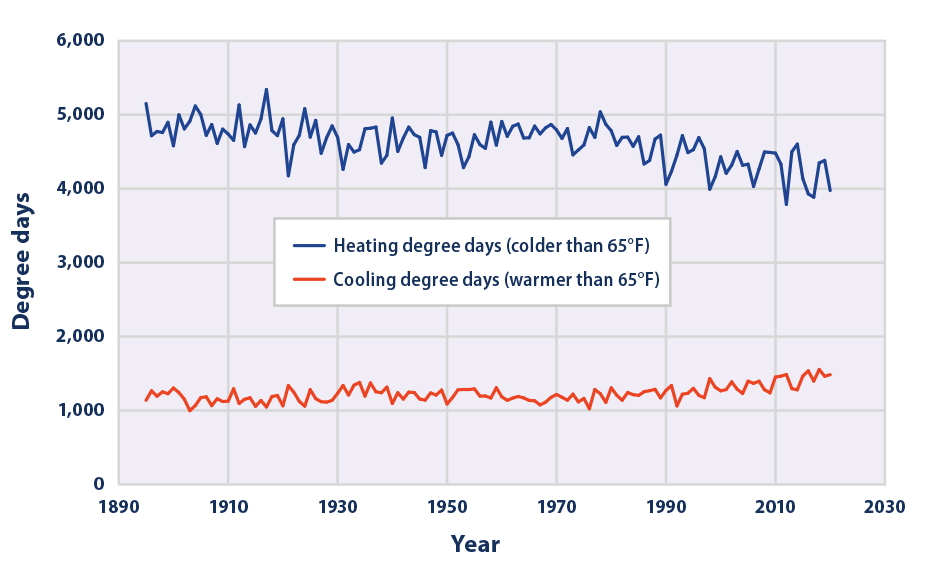If you’re like most people, you probably don’t know what are cooling degree days. But if you live in an area with hot summers, knowing what are cooling degree days can have a big impact on your life!
Cooling degree days are a measure of how much heat there is in the air temperature. The higher the number, the more heat there is. And that can mean higher energy bills for you!
Table of Contents
- What Are Cooling Degree Days?
- How Cooling Degree Days Work
- The Benefits of Cooling Degree Days
- Drawbacks of Cooling Degree Days
- How to Calculate Your Energy Consumption with CDD
- Frequently Asked Questions
- What are heating degree days and cooling degree days?
- What are cooling degree days used for?
- How do you calculate cooling degree days in Celsius?
- What does degree day mean?
- Conclusion
What Are Cooling Degree Days?
A cooling degree day (CDD) is a measure of how hot it is over a period of time, relative to a base temperature. The base temperature is usually set at 65°F. So, if the average temperature for a day is 80°F, that day would have 15 CDD.
How Cooling Degree Days Work
Cooling degree days are a measure of how much (in degrees) and for how long (in days) the average temperature is above a certain threshold. CDD is used to estimate energy demand for air conditioning. The more CDD, the more energy is needed to cool a building.
 (Source)
(Source)
The Benefits of Cooling Degree Days
As the summer heat kicks into high gear, many of us are looking for ways to stay cool. One way to do this is by using cooling degree days.
Cooling degree days are a measure of how much heat there is in a given area. They’re calculated by taking the average daily temperature and subtracting 65 degrees. So, if the average temperature in an area is 80 degrees, there would be 15 cooling degree days.
The more cooling degree days there are in an area, the greater the demand for air conditioning. This means that cooling degree days can be used to predict how much energy will be needed to keep buildings cool.
So why is this important?
Well, by understanding cooling degree days, we can better prepare for hot weather and make sure that we have enough energy to keep everyone comfortable. Additionally, cooling degree days can help us understand the impact of climate change on our energy use.
So next time you’re trying to stay cool, don’t forget about how cooling degree days work.
Drawbacks of Cooling Degree Days
As the weather gets warmer, air conditioners get turned on more frequently to combat the rising temperatures. However, there is such a thing as too much of a good thing – and when it comes to air conditioning, that can mean using up too much energy and racking up a hefty bill.
One way to determine how much energy your air conditioner is using is by looking at the cooling degree days. This is a measure of how much heat there is in the air, and is calculated by taking the average daily temperature and subtracting it from 65 degrees Fahrenheit. If the resulting number is positive, that means there were cooling degree days that day.
The problem with using cooling degree days as a way to measure air conditioner usage is that it doesn’t take into account how much the air conditioner is actually used. For example, if it’s a particularly hot day, the air conditioner may run all day to keep the temperature inside the home comfortable. However, if it’s only used for a few hours on a milder day, the cooling degree days will be the same even though the air conditioner wasn’t used as much.
In addition, cooling degree days don’t take into account the efficiency of the air conditioner. A newer, more energy-efficient model may use less energy to cool the same amount of space as an older model. However, the cooling degree days would be the same in both cases.
The bottom line is that cooling degree days are a useful tool for determining how much your air conditioner is running. However, they don’t give the whole picture when it comes to energy usage. If you want to get a true sense of how much your air conditioner is costing you, run an energy management software and analyze your energy bills rather than simply relying on cooling degree days.
How to Calculate Your Energy Consumption with CDD
When it comes to energy efficiency, one size does not fit all. Just as you wouldn’t buy a one-size-fits-all shirt, you shouldn’t expect the same energy-saving results from a one-size-fits-all approach to energy efficiency. Your business is unique so your energy efficiency solution should be too.
One way to tailor an energy-efficient solution to your specific needs is to use cooling degree days or CDD. CDD is a measurement that tells you how much (in degrees) and for how long (in days) the temperature was above a certain threshold. While the threshold is usually 65 degrees Fahrenheit, it can be set at a different temperature depending on your needs.
To calculate CDD, you first need to know the average temperature for each day. You can find this information online from weather sources like The Weather Channel or AccuWeather. Once you have the average temperature for each day, subtract the threshold temperature from the average temperature.
For example, if the average temperature for a day is 80 degrees Fahrenheit and the threshold temperature is 65 degrees Fahrenheit, the CDD for that day would be 15.
If the resulting number is positive, that means the temperature was above the threshold for that day. If the number is negative, that means the temperature was below the threshold. Once you have the CDD for each day, you can add up the total for the entire year to get the annual CDD for your facility.
Now that you know your CDD, you can use it to find energy-saving solutions that will work best for you. For example, if you live in an area with a high CDD, you might want to invest in energy-efficient window treatments or insulation to help keep your home or business cool.
Frequently Asked Questions
What are heating degree days and cooling degree days?
Cooling degree days are a measure of how hot it is over a period of time. The higher the number, the more cooling is required.
What are cooling degree days used for?
Cooling degree days can be used to calculate the amount of energy required to cool a space.
How do you calculate cooling degree days in Celsius?
Cooling degree days are a measure of how hot it is over a period of time. To calculate cooling degree days in Celsius, you subtract the average air temperature from the highest temperature and then divide by 2.
What does degree day mean?
A degree day is a unit of measurement that represents how much heat is required to raise the temperature of one pound of water by one degree Fahrenheit. Cooling degree days are used to estimate how much energy is needed to cool space while heating degree days are used to measure how much heat is required to make a building comfortable.
Conclusion
Cooling degree days are an important factor to consider if you live in a hot climate. By understanding what are cooling degree days and how they can affect you, you can make sure that you’re prepared for the summer months ahead!





